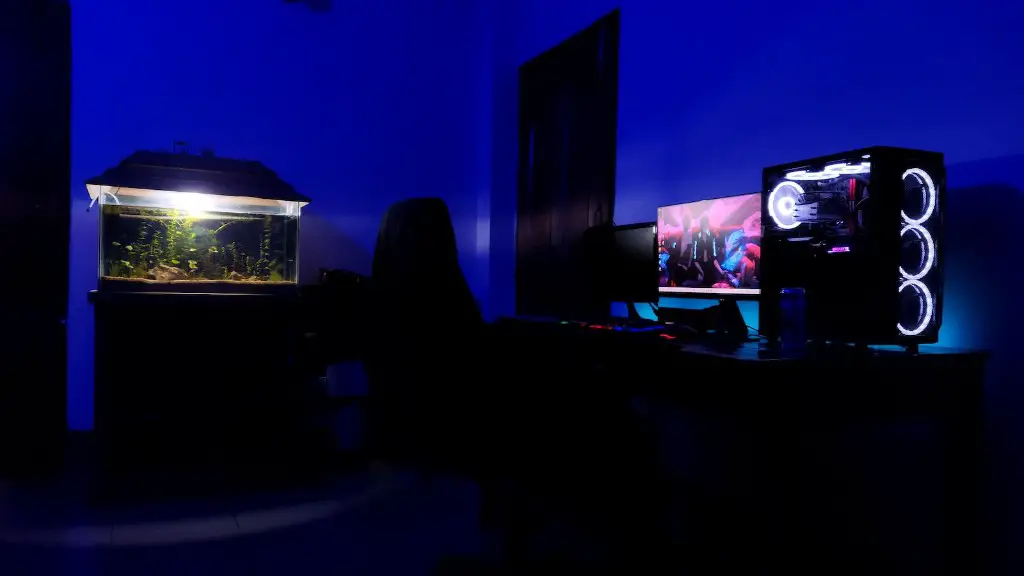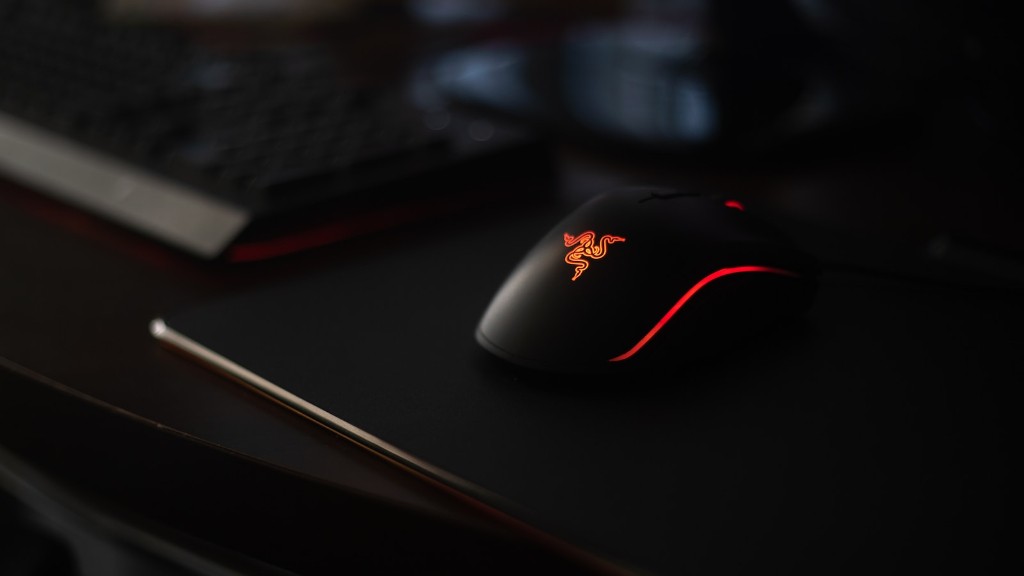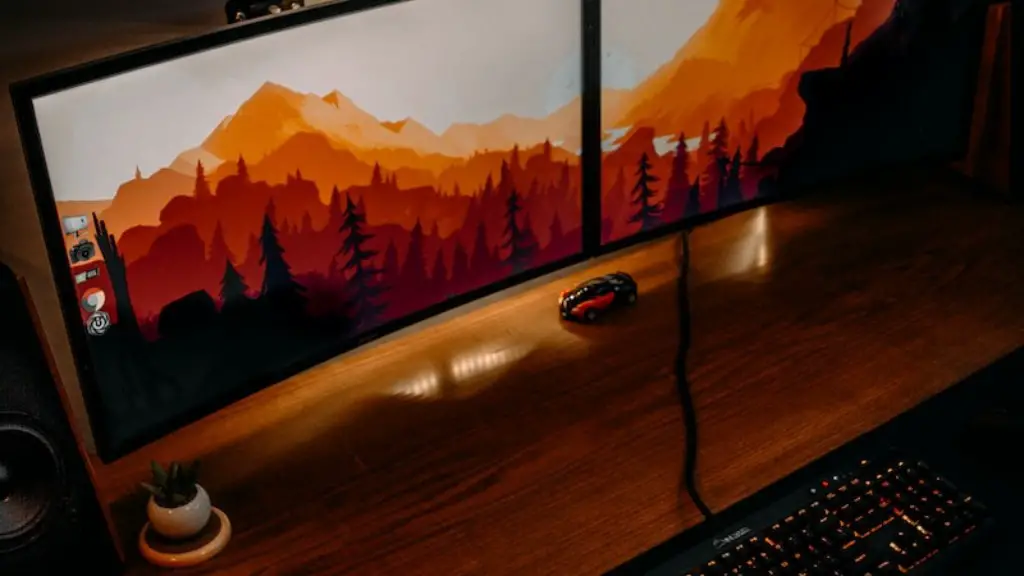Assembling a gaming PC requires careful consideration, especially when it comes to choosing the best motherboard. The motherboard is not only important for the overall performance of your gaming PC, but also for its overall lifespan. So, what exactly do you need to look out for to ensure you get the right motherboard for your gaming PC?
The primary factor to consider when picking the best gaming motherboard is the socket type. This refers to the type of central processing unit (CPU) that will fit onto the motherboard. The two most common types are Intel and AMD. If you’re buying a gaming PC from a pre-built system, you can easily determine the socket type. If you’re custom-building a computer, make sure to choose the right CPU to fit the socket.
Another important factor to consider when buying a motherboard is the size. Motherboards come in the standard sizes of Mini-ITX, Micro-ATX, ATX and Extended-ATX. You’ll need to pick the size that fits inside your case, as some cases won’t fit larger motherboards. On the other hand, opting for a smaller motherboard will mean fewer connections, meaning you won’t have as many expansion options in the future.
If possible, you should also take a look at the features the motherboard offers. Some features might be important depending on your needs, e.g. if you’re a content creator who needs a lot of USB ports or someone who needs multiple graphics cards, some motherboards have additional ports and slots that are perfect for this. However, having too many features might raise the price of the motherboard if you don’t need them.
Lastly, you’ll want to check and make sure that the motherboard is compatible with the other components. Before purchasing anything, double-check all the specifications to make sure the components will fit onto the motherboard and that the form factors match. Compatibility issues can be quite frustrating and frustrating, so plan ahead and double-check all the specs.
Form Factor Matters
Form factor refers to the physical structure of the motherboard; it designates what components can and can’t fit. There are several main form factors: ATX, Micro-ATX, and Mini-ITX. ATX is the largest, with the most ports and slots, and is the standard size for gaming computer motherboards. Micro-ATX is a bit smaller, while Mini-ITX is most often used in very small computers.
If you’re building a gaming PC, you will likely want to go with the ATX form factor. This will give you plenty of ports and slots to work with, and it will ensure that your motherboard can accommodate all the components you need. However, if you’re building a small form-factor PC, you may have to go with a Mini-ITX form factor motherboard. This will limit your choices in terms of ports and slots, but it will also allow you to pack more components into a smaller package.
When buying a motherboard, it’s important to check the form factor to make sure it matches the form factor of your other components. You don’t want to buy a large-form-factor board for a small form-factor case, or vice versa. Before buying anything, double-check all the specifications to make sure the parts will fit—and work—together.
Memory Slots
Another important feature to keep an eye on when shopping for a gaming motherboard is the number of memory slots. The more memory slots you have, the more space you have to install more RAM. Generally speaking, the more RAM you have, the better, as more RAM allows you to run more applications at once and you’ll have better multitasking capabilities. Most motherboards have two or four memory slots, so make sure to pick one that gives you more than you need so you can upgrade in the future if you need to.
The type of memory slot is also important to consider, as some motherboards only support certain types of memory. Generally speaking, motherboards support either DDR3 or DDR4 memory, and in some cases a combination of both. Again, make sure to check the specs before buying to make sure the memory you want to buy is compatible with your motherboard.
In addition, consider any special memory configurations that the motherboard might offer. Some motherboards support a dual-channel memory architecture, or an even higher number of channels, that allow your RAM to run at faster speeds and partially increase your gaming performance.
Integrated Video Outputs
The majority of modern gaming motherboards do not come with integrated graphics. However, if you’re building a budget gaming PC and don’t have the budget to buy a dedicated graphics card, you can save some money by investing in a motherboard with integrated graphics. Be sure to check the specs to make sure the motherboard’s integrated graphics are powerful enough to run the games you want to play.
In addition, it’s important to check the number of video outputs the motherboard has. After all, you’ll want to be able to output video to multiple displays if you so choose. The most common video output ports are VGA, DVI, and HDMI. Some motherboards come with multiple ports of the same type and some come with a combination of all three. Make sure to check the specs to make sure the motherboard has the type of video output you need.
Onboard Audio
If you’re a gamer, you’ll likely want to invest in a gaming headset to get the most out of your gaming experience, so you’ll want to make sure the motherboard you pick has decent onboard audio. Most motherboards today come with onboard audio, which is usually adequate for gaming. However, if you’re looking for the best audio quality for gaming and other media, you’ll want to invest in an external audio card, as these typically offer better sound quality than onboard audio.
In addition, consider any other audio-related features that the motherboard offers. Some gaming motherboards come with dedicated audio ports for certain types of headsets, such as a USB port for virtual surround sound or a headset port for gaming headsets. If you’re using one of these types of headsets, make sure to pick a motherboard that has the port you need.
Overclocking Capabilities
If you’re an enthusiast looking to squeeze out every bit of performance from your PC, you’ll likely want to consider taking advantage of overclocking. Overclocking allows you to push your components beyond their stock speeds to make them run faster. However, not all motherboards are capable of overclocking, so be sure to check the specs to make sure the motherboard you’re interested in is capable of it.
It’s also important to do your research to ensure your CPU is compatible with the motherboard. You’ll also want to consider the voltage limitation of the motherboard. Some motherboards may support higher voltages than others, so make sure to compare different motherboards to see which one suits your needs best.
Connectivity Options
Lastly, you’ll want to consider the connectivity options available on the motherboard. Generally speaking, there are two types of main connection ports. One is the Internets port, which connects to the router or modem. You’ll also want to consider the number of USB ports available on the motherboard, as these will allow you to connect devices such as a gaming headset or mouse. Additionally, if you’re planning on connecting multiple storage devices, make sure to check that the motherboard has enough SATA ports.
In addition, if you’re looking to take advantage of newer features such as USB 3.0, make sure to check that the motherboard has the right ports. Also look out for any special features, such as built-in Bluetooth or Wi-Fi adapters, if you think you might need those down the road.
Summary
With so many different types of motherboards out there, it’s important to do some research and make sure you pick the one that best fits your needs. Make sure to consider the socket type, size, features, compatibility, form factor, memory slots, integrated video output, onboard audio, overclocking capabilities, and connectivity options. And if you’re unsure about any of these factors, don’t hesitate to reach out and ask for help.




